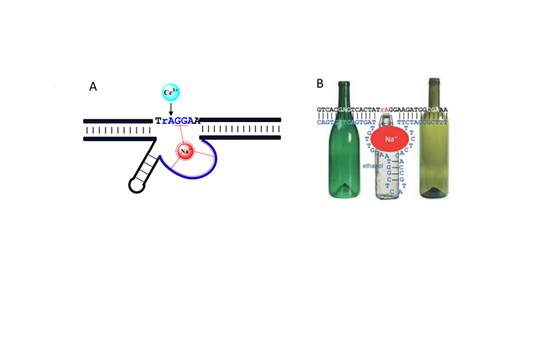
Recently, Professor Liu Juewen from School of Medicine has found a DNA enzyme---Ce13d, which depends on two metal ions and has cleavage activity of RNA. He has uncovered the reaction site and reaction mechanism between such the two metal coenzymes as Na and Ce3 and Ce13d, based on the footprint of DMS dependent DNA and techniques including Tb3 fluorescent probe. Besides, he has found that the loop in the active center of Ce13d can form the Na pocket, and further specifically bonds to Na; while the Ce3 acts on the potential cleavage sites of substrate, lowering the activation energy of the reactions and then realizing the catalytic cleavage of substrate by Ce13d(Fig. A). This study first specifies the specific role of metal ions in Ce13d, providing an important reference for the study of DNA’s spatial structure. The research results were published online in Nucleic Acids Research(IF=9.112)under the Oxford University Press on November 18, 2015.
In the same period, an active DNA enzyme (EtNa) depending on metal ions and organic solvents, was also found by the research group. The activity of sodion-dependent DNA enzyme can be enhanced by more than 1000 times in water-and-alcohol co-solvent. Accordingly, the research group developed a DNA-based biosensor, which was successfully applied to the detection of alcohol concentration in wine for commercial use(Fig. B). The research findings were published online in ChemBioChem (IF=3.088) under the Wiley Publishing Group on November 9, 2015.











